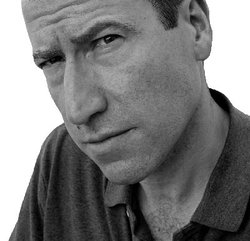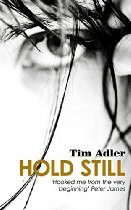Tim Adler, author of psychological thriller Hold Still, shares what he has learned so far on his journey from nonfiction writer to crime author.

When my publisher told me that Shots wanted me to write a piece tying in with the publication of my debut print novel Hold Still, I felt overwhelmed. My post would appear alongside most of the greats in crime fiction, including three of my favourites: Peter James, Linwood Barclay and Peter Swanson. What could I possibly have to tell writers of that calibre?
On the other hand, unlike many authors here, I am not in a position where I can give up my nine to five. My day job is editing advertorial for The Daily Telegraph, where the kids in the office are forever dinning into me that online works differently to print features. "Digital is all about 'listicles' and 'snackable content'," they tell me. So, for what it's worth, here is what I have learned so far in my journey as a thriller writer...
Explore your deepest fear
The most wonderful thing about writing psychological thrillers is that they allow you to explore your deepest fear. Asking yourself, "What's the thing I'm most frightened of?" is a good starting point for any thriller. The spark for Hold Still came from taking photographs of my son jumping from high rocks into the sea on holiday. Through the viewfinder he looked as if he was about to brain himself any moment as he plunged into the Mediterranean. I went cold. "What if you caught the moment when the person you loved most died?" I wondered, putting the camera down. That was my inspiration.
And of course, what your deepest fear is changes from year to year. It's an ongoing form of therapy.
Everything must be in conflict
The best definition of drama is somebody wanting to enter a room at the same time as another person wants to leave. To do so, each of them has to get past one another. That conflict has to be in every conversation, every scene, each sequence.
Poetry is distillation
So said Ezra Pound, and how right he was. The most common fault when editing other people's copy is prolixity. Or calling a spade a rectangular digging instrument with a handle attached, if you get what I mean. Because newsprint costs money, and even website server space ratchets up, the more you can distil copy the better.
Understand story structure
I am convinced that there is a right way to tell a story and that this pattern, like the double helix of DNA, is replicated in each scene, each chapter and each act. And that pattern -- like repeating pattern of a snowflake -- is as follows: inciting incident, mounting complications, crisis and resolution.
Because we absorb thousands of stories each year, all of us know the satisfying way to tell a story. For me, there has to be another moment right before the crisis. Some screenwriters call this the moment of no return -- the moment when any other course of action becomes impossible -- but for me, it's a revelation: the protagonist understands something which propels him to act.
Hemingway is a bad role model
Ernest Hemingway was my idol as a fledgling writer; those stripped-down sentences and that muscular tough-guy melancholic prose. Often imitated, Hemingway is a Charybdis for young writers, threatening to drag young writers down to their doom. Hemingway talked about the meaning of a story being like an iceberg, nine tenths below the surface. In the hands of less-skilled writers, that often can mean flat prose. So make your copy as lively as possible – it’s all about pouring that emotion onto the page.
Your best friend is an egg timer
During the week I listen to a lot of writing podcasts, and inevitably some snake-oil salesman will pop up claiming to have found a way to write 3,000 words per hour. Avoid. What readers want is quality, not quantity, so buy yourself a cheap egg timer and promise yourself that for the next 60 minutes you are not going to do anything but stare at your laptop until something emerges. You are not going to check your email, Facebook or sneak a look at your Amazon sales rankings. Raymond Chandler used this same technique. His theory was that eventually you get so fidgety, there’s nothing else to do but get tapping.
The autobiographical rarely works
What's been interesting with Hold Still is that most of my copy editor's red lines were reserved for when I tried to shoehorn personal experience into the story. The autobiographical rarely works, except for tiny details based on things you've remembered. Stanislavsky, the Russian acting coach, called this “sense-memory.” But anything more than what a character looks like or the way a room smelled, forget it ... readers are not interested in you vomiting up your hurt onto the page.
Publisher: Urbane Publications (17 Mar. 2016) Pbk £8.99

coupons prescriptions
site prescription coupon card
abortion pill costs
link walk in abortion clinics
gedeones
click geodon pfizer
naltrexone implant australia
open who can prescribe naltrexone
where can i buy low dose naltrexone
link naltrexone uses